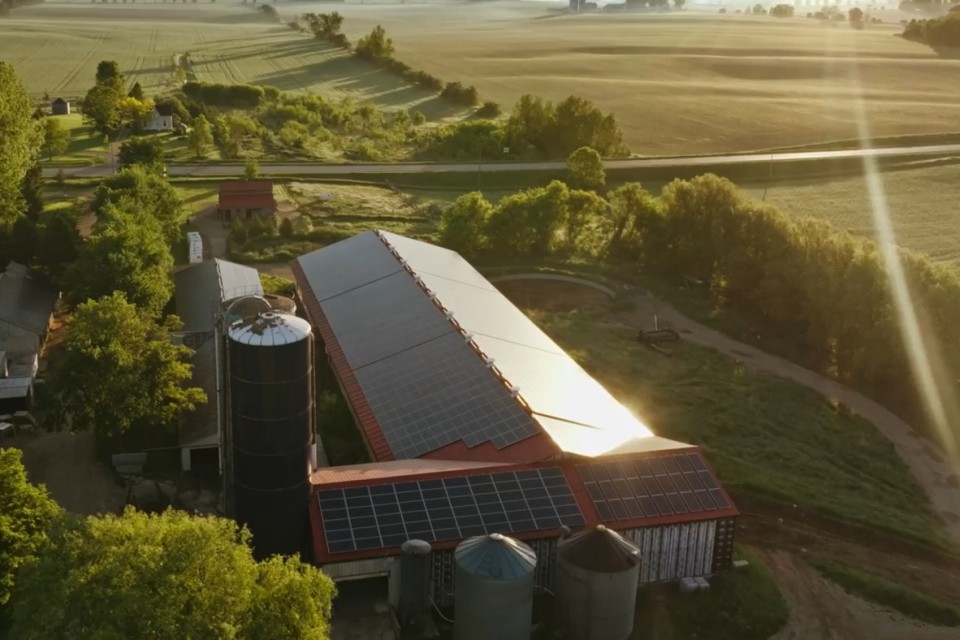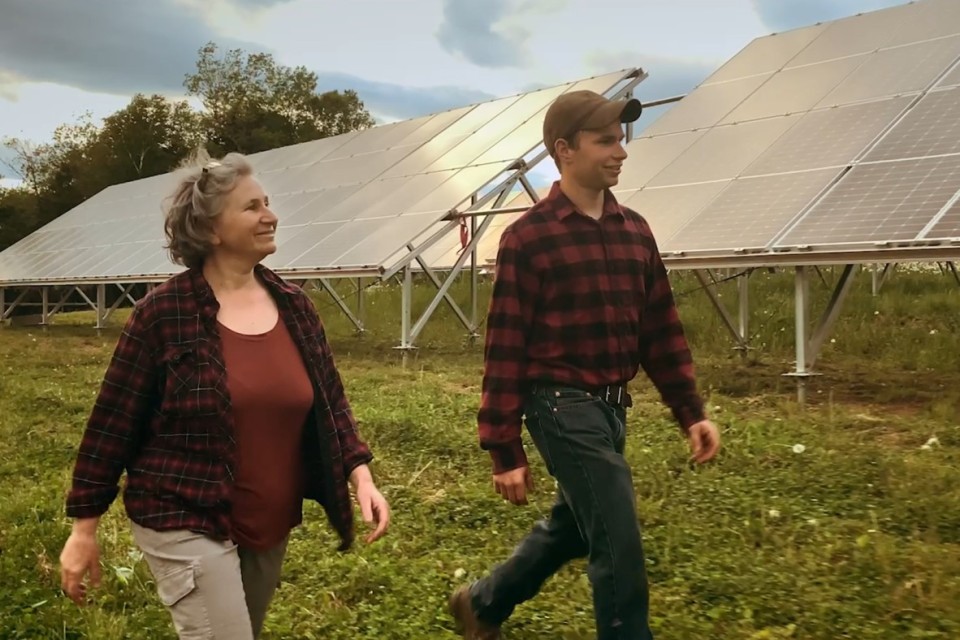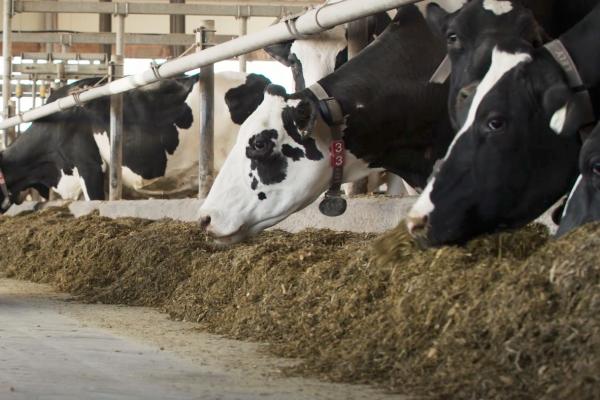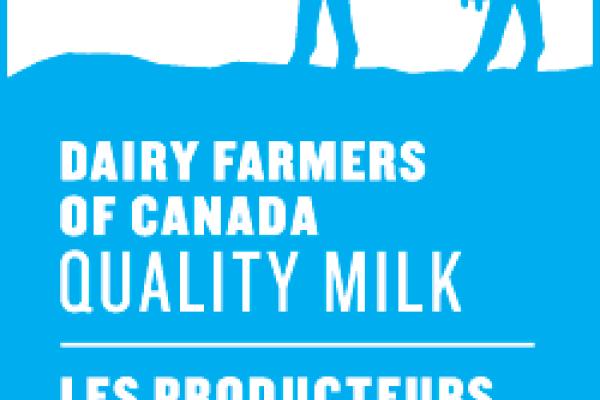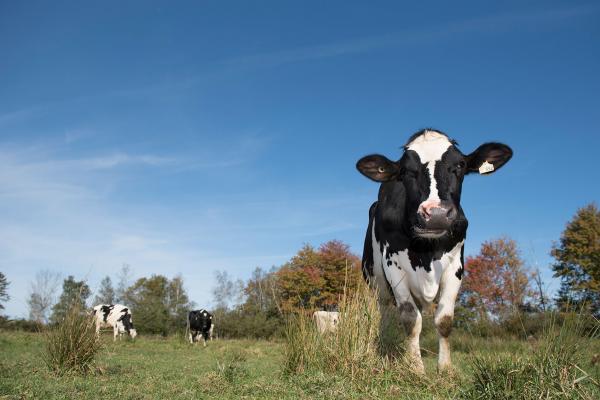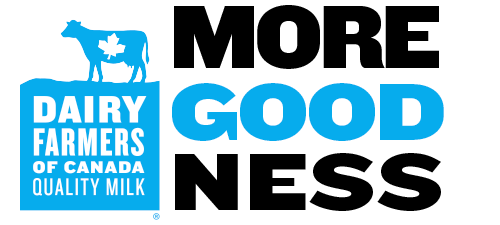Producing and Using Renewable Energy
Many Canadian dairy farmers are uniquely positioned to take advantage of renewable energy. There are a number of innovative, environmentally-friendly methods being incorporated into dairy farms to generate renewable energy.
What are examples of renewable energy sources on Canadian dairy farms?
Biodigesters that capture energy from anaerobic digestion, wind turbines that generate energy from the wind, and solar panels that generate energy from the sun.
Learn more about these renewable energy sources.
How does a biodigester help reduce emissions?
Instead of letting emissions from manure naturally evaporate in the air, they can be reduced through anaerobic digestion, where bacteria break down the manure in a silo, turning the methane in the manure into biogas that can be used to generate electricity, heat, or clean-burning biofuel.
This has the added benefit of producing a richer form of green fertilizer which a dairy farmer can use for their farm. A biodigester can also reduce methane emissions by up to 60% and odours by up to 90%. A typical dairy farm’s biodigester can also produce enough electricity for 11 houses!
What other ways can dairy farms save energy and reduce emissions?
Farmers can take measures through an energy audit and include enhancements on their farms to reduce energy demand, such as installing energy-efficient lighting, ventilation or equipment. They may be able to use more efficient grain dryers, if applicable, or progressively switch from diesel-fueled farm machinery to electric farm machinery.
Learn more about renewable energy.

From Biofuels to Solar: Farming with Renewable Energy
Learn More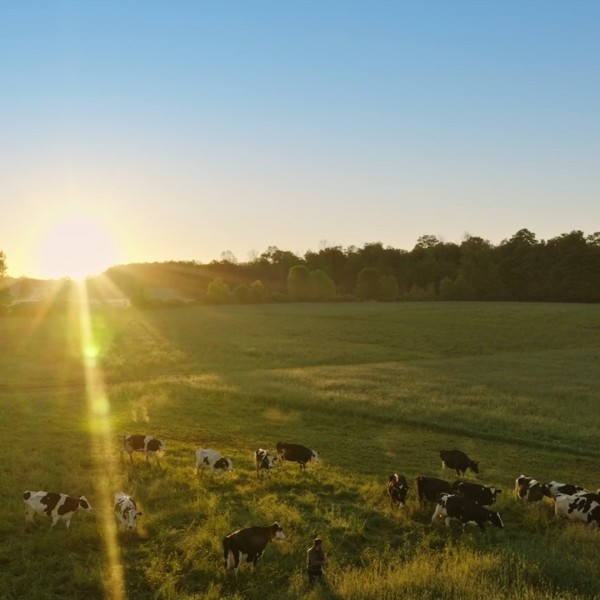
Net Zero by 2050
Learn More
